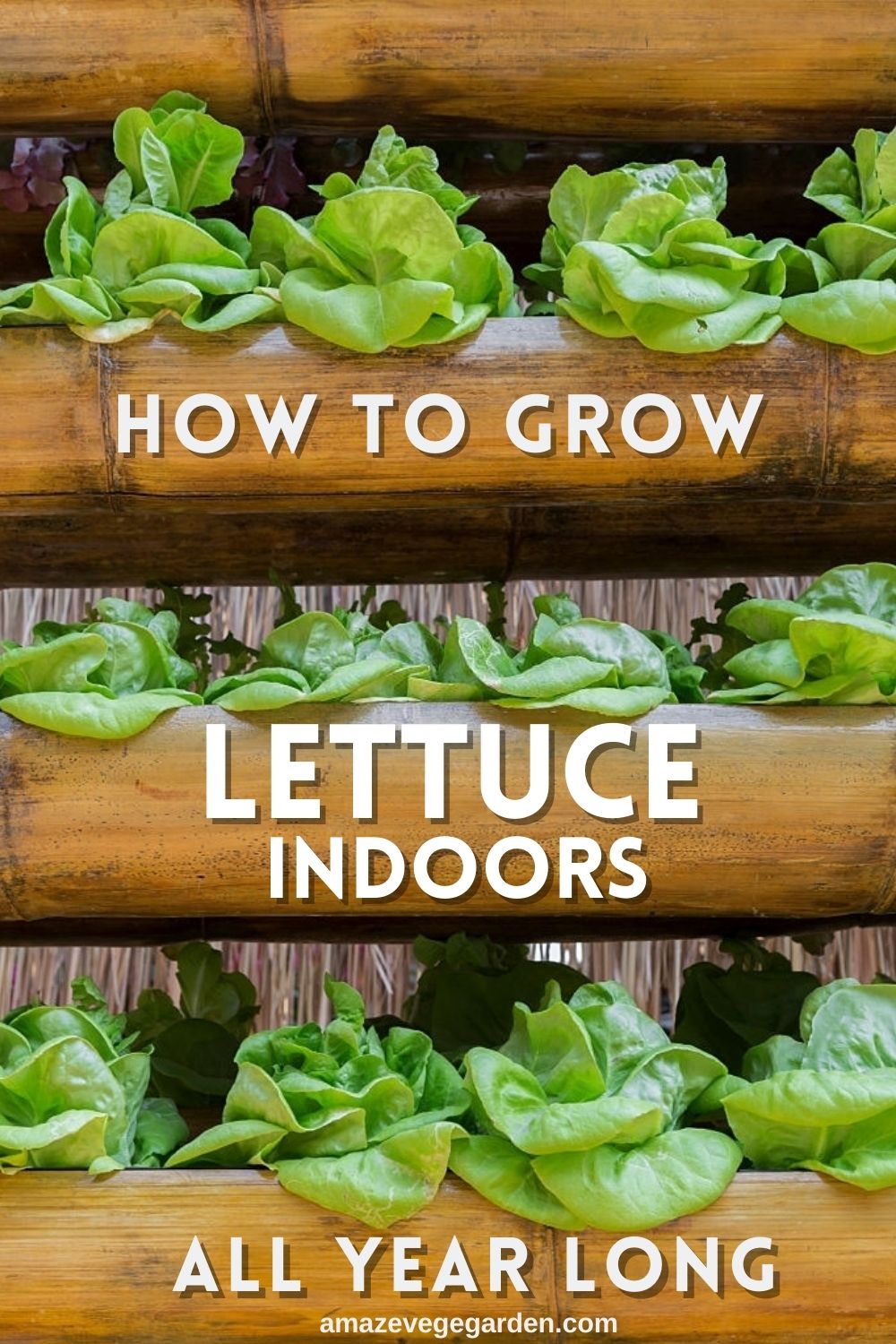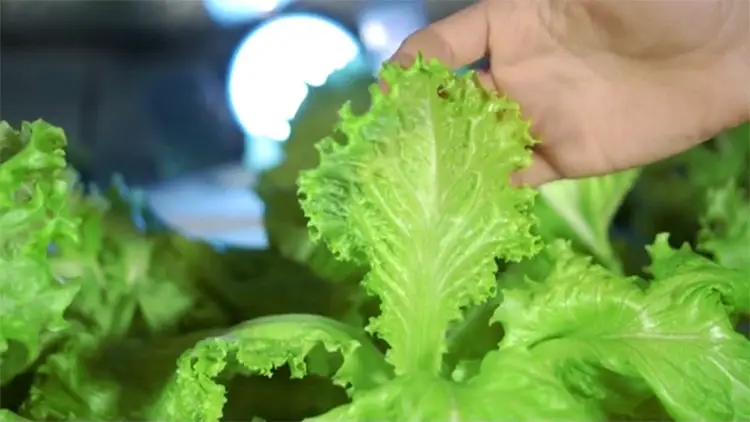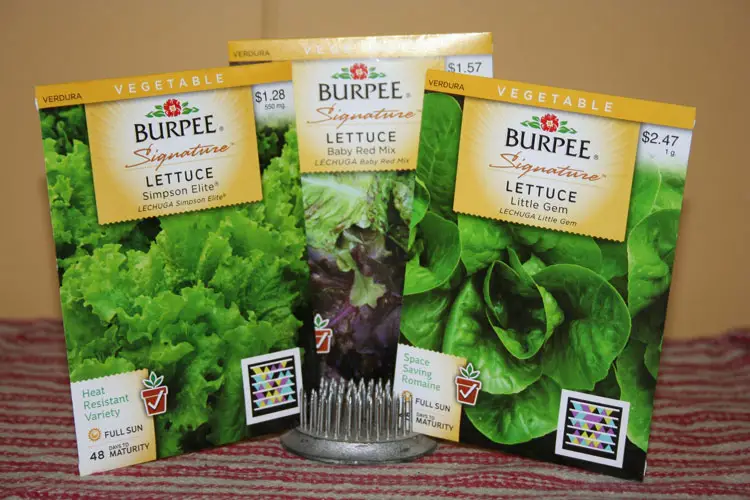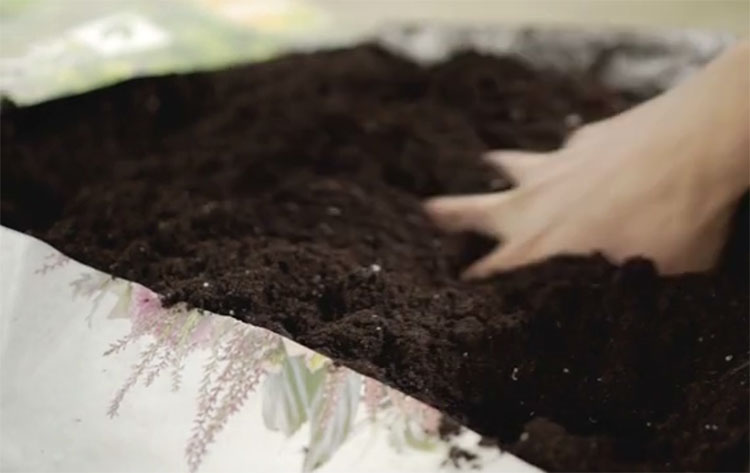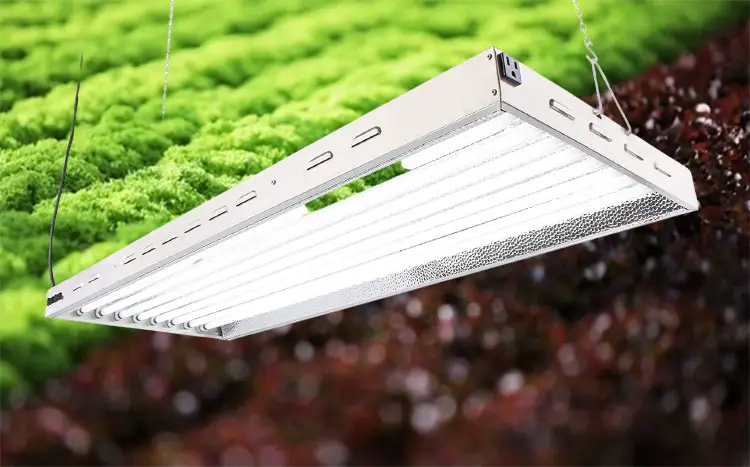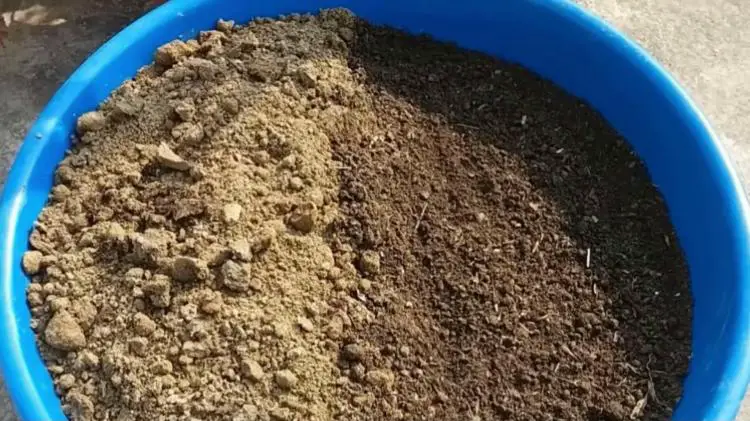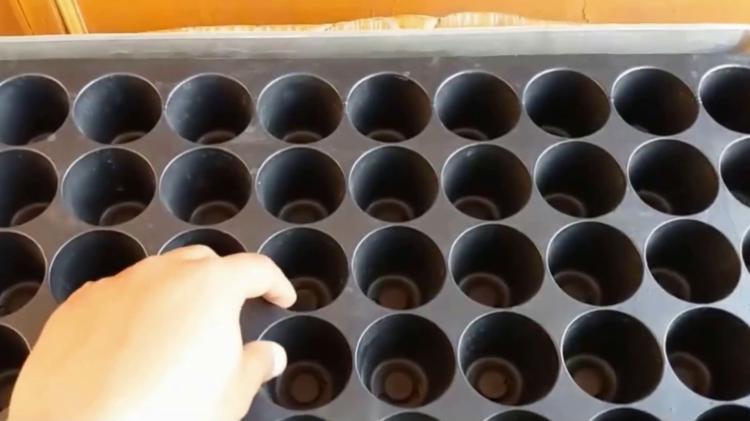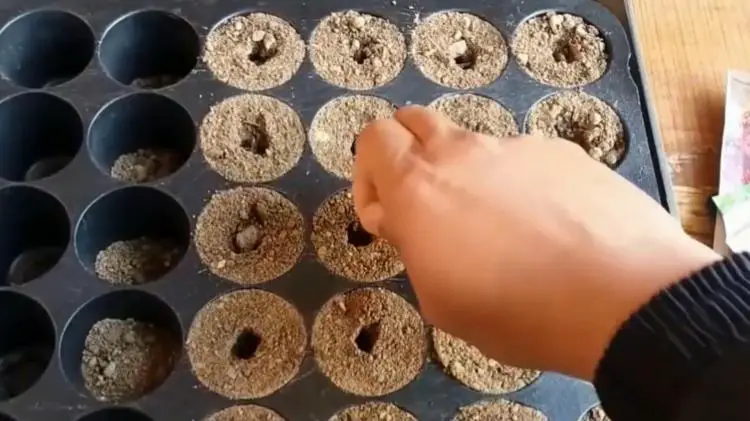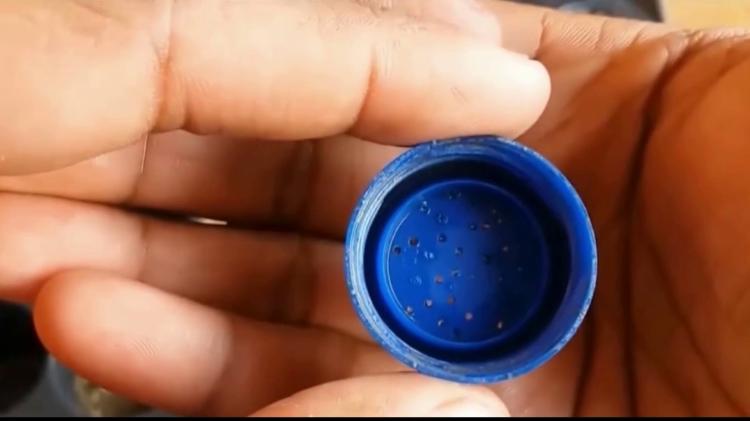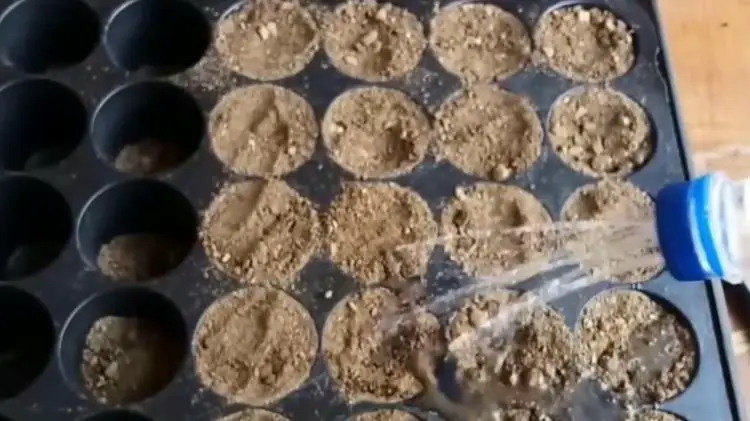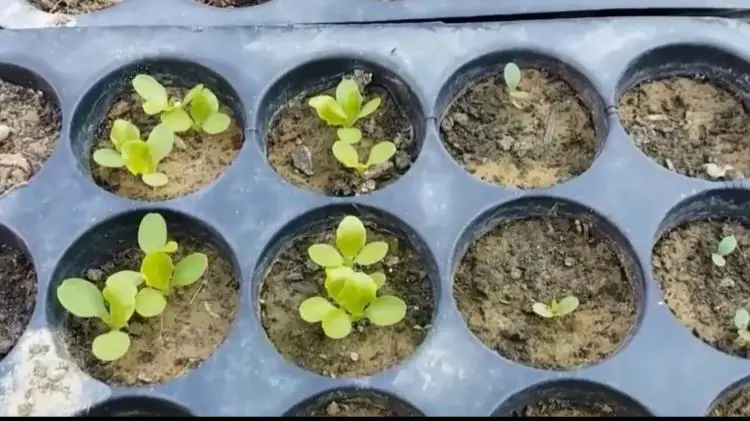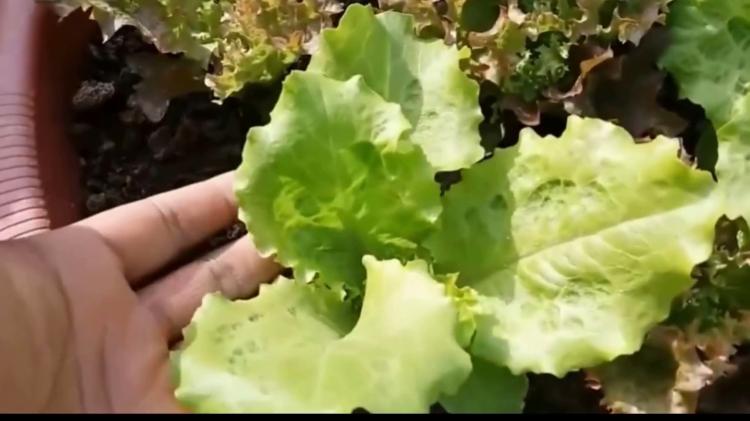Growing lettuce indoors is quite simple and easy. Even a complete novice can do it. It is a good gardening task where parents may even ask their children to carry out.
We all know that it is quite challenging for us to grow lettuce outside, especially during winter when we need snow and ice. Some may even need to deal with the cold and strong wind outside.
To avoid all the hassles, it is rather a good idea to grow lettuce inside our house. As long as you make some rooms for the plants, you will be able to plant lettuce all winter long, no matter how the weather behaves outside.
However, some people may not know how to start to grow them indoors. Well, you do no need to worry too much. I will share with you how to do so in a short while.
Without further ado, let’s begin.
Things That We Need to Prepare
Mainly, there are 4 things that we need to prepare before we can start planting lettuce indoor.
Those 4 things are:
- Containers
- Seeds
- Soil
- Grow light(Optional. If there is not much sunlight you can get indoors, you will need to get a grow light.)
Containers
If you do not want to spend any money getting a new container to plant your lettuce, you can look around in your house and find some containers. One of the good container ideas is getting a plastic box.
Once you get the container, you need to have a drainage hole at the bottom. You can poke holes in the bottom by using a screwdriver and a hammer.
Another container idea will need you to spend some money. It is for you to a seedling tray. I will also share with you the seeding tray method to grow lettuce indoors.
Seeds
For lettuce seeds, it is best to choose those easy and fast-growing lettuce seeds. Buttercrunch, Salad Bowl, Iceberg, Romaine, Lollo Rosa, and Black-Seeded Simpson are among the ideal seeds for you to grow indoors. All the seeds can be nestled in their germination site.
Buttercrunch
This variety is most people’s favorite for taste performance and disease resistance. It is ideal for home gardeners because it doesn’t bolt as easily as some other lettuce varieties.
It has a buttery velvety texture. The sweetness of Buttercrunch is nicer compare to Romaine.
Salad Bowl
Salad bowl lettuces are a cool-weather crop. There are very easy to collect seeds from. There are beautiful, and their taste is very great as well.
One plant can give you a ton of seeds so that you will not running out of Salad Bowl lettuce seeds where you can grow them over and over.
Iceberg
Very common to be found in any supermarket and restaurant. They are crisp and sweet. They can stay sweet even when the heat of summer hits.
Romaine
Romaine lettuce is among the few varieties that grow upright and can withstand heat. It tastes slightly bitter, but it is very crunchy and is ideal for making the salad.
However, lately, there was an outbreak known as E. coli O157:H7 caused by Romaine lettuce. Therefore, if you have such concerns, you may want to skip growing this lettuce variety at the moment.
Lollo Rosa
This is one of the most expensive lettuce we can buy in the market. So, if we can grow ourselves at home, we will save a lot of money without spending on this lettuce variety.
Lollo Rosa is rich in vitamin A, and it also can help reduce the sodium effect in our body.
Black-Seeded Simpson
Black-seeded Simpson is also known as leaf lettuce. This is All-American classic lettuce. From the lettuce history, we know that it has been around since the 1870s.
This variety of lettuce is crunchy and crispy. There is no bitterness when you bite it. You are going to love the taste in the first place if you try it out.
Soil
It is best to choose organic, light, and fluffy soil to grow your lettuce because this type of soil can help the seeds germinate fast.
In addition to soil, you will need to get good dirt potting mix as it is full of great nutrients.
Grow Lights
The lettuce plants require a sufficient quantity of light to manufacture the food for their own. It is suggested to the homeowners to use artificial lights for their indoor lettuces to compensate for the deficiency of sunlight indoors.
The indoor grow lights can substitute the sunlight and help the indoor plants grow properly and survive long. Light is associated with varied colors that are measured via the light meter.
All the plants use sunlight to manufacture food, as it is the natural source of light. This kind of light comprises UVA and UVB. Sunlight is not in control of humans, and hence, it is not considered a reliable source intended for indoor plant lights.
One of the artificial lights is incandescent light, which is utilized to illuminate the house when electricity is absent. Such kinds of indoor grow lights emit red light and can provide heat to the plant.
Common Indoor Plant Lights:
Fluorescent Light
A widespread kind of indoor grows light is fluorescent light. These types of light are relatively cheaper as compared to incandescent bulbs.
However, fluorescent lights are costly to get installed when compared to bulbs. Plant growth lights are contained in the fluorescent lights specifically created for indoor plants to help them grow properly. These are perhaps the best lights that you can use for fulfilling the lettuce requirement of light.
HID Light
HID kinds of light are expensive compared to most of the light available in the market for indoor plants. HID stands for High-Intensity Discharge, which has the capability to emit broad-spectrum light required by the plants to grow.
However, one disadvantage of this kind of Indoor plant light is the amount of heat that it generates along with the light. Excessive heat can result in the wilting of the indoor plant, and even the bulbs are likely to blow apart even with a drop of water coming from the plants.
I love to use fluorescent lights as I think they are the best grow lights for my indoors lettuces. At least, they are the best alternative to natural sunlight compared to various other forms of light currently available in the market.
The fluorescent lights’ cost is relatively cheaper compared to the High-Intensity Discharge light and the incandescent lights. Moreover, the light that is generated from the fluorescent lights is softer as well as less destructive.
They are also the best indoor plant lights because custom-made fluorescent lights are available in the market, exclusive alternatives to natural sunlight.
The process to Grow Lettuce Indoors in a Seed Tray.
Alright, so now everything you need to grow lettuce indoors is ready. It’s time to work now.
Below I’ll share with you how to grow lettuce indoors in a seed tray.
First, prepare potting mix. The potting mix should be in the ratio of 60% garden soil and 40% organic compost.
Second, get a container. I am using the seed tray to germinate the lettuce seed. So I need to fill the potting mix into all the holes. Once all the holes have been filled, I will use a stick or pencil to dig a hole in each pot to insert the seed. I will sow 3-4 seeds into each hole.
Things to remember: You need to ensure that the room temperature is not too warm because lettuce seeds won’t germinate if the ambient temperature is higher than 25 degrees Celsius.
I will then use the potting mix to fill the hole after all the seeds have been inserted into the pot, then press them gently.
After that, get a used mineral water bottle. This is to make a simple water sprinkler. Poke some holes on the cap, fill water in it and close the cap. Then use it to sprinkler water on the entire seed tray.
Ensure they are moist and receiving enough sunlight. I normally place the seed tray close to the windowsill to get the sunlight shining through the window.
Generally, after 7 to 8 days, I will be able to see small sprouts being growing. After 21 days, the lettuce will grow to a size that they are ready for me to repot them to a larger container.
Process of Repotting
- Prepare a plastic container with holes at the bottom.
- Insert potting mix. The ratio is 60% of garden soil and 40% of organic compost.
- You can remove the entire plant from the seed tray and repot it into the plastic container. You may do seeding every 2 weeks to ensure you can harvest lettuce all year round.
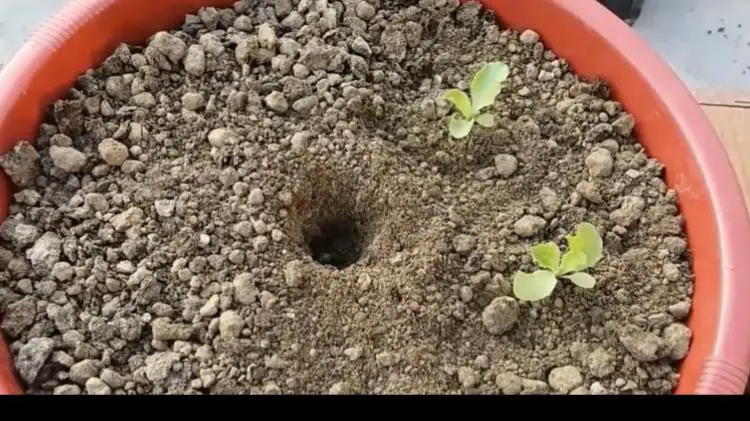
- After repotting, make sure to water the container to keep it moist(The lettuce will grow significantly in 8-10 days).
- Every 4 or 5 days, you can use a shovel to move the soil so that it can always remain light and fluffy.
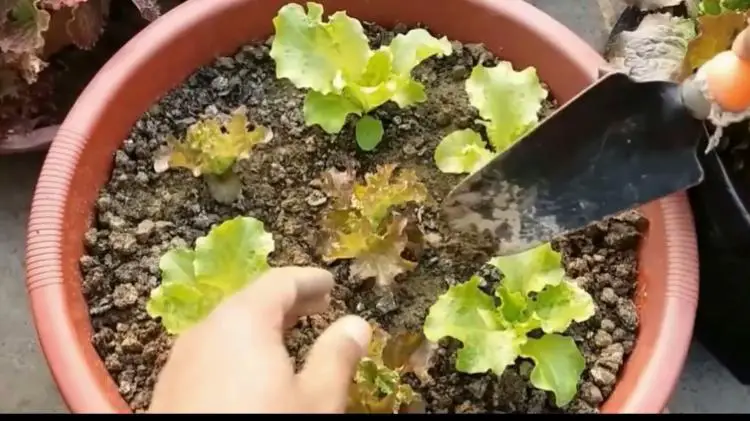
- Ensure the soil is moist and is having good drainage.
- Seeding every two weeks ensures that you can harvest lettuce throughout the year.
- Adding nitrogen-rich organic fertilizer every 18 to 20 days can promote the yield of lettuce.
When harvesting, first pick the leaves in the outer circle. By doing so, you can prolong the growth period of lettuce. You can refer to the video below and see how you can grow lettuce indoor in the container.
How long does it take to grow lettuce indoors?
You can expect to harvest your lettuce in 2-4 weeks. When harvesting, first pick the leaves in the outer circle. By doing so, you can prolong the growth period of lettuce.
How Much Light Does Lettuce Need to Grow Indoors
The amount of light available is critical to the growth of lettuce seeds because it determines the growth rate and the degree of the lushness of the plant.
It is recommended that your new plants receive at least 10 to 12 hours of light every day. If they can’t get enough sunlight inside the room, you may need to use grow light. This is the only special equipment that you need. You can find them available in most hardware shops and gardening stores.
Did you find this post useful? Would you like to get back to it later? Save THIS PIN below to your best gardening and vegetable boards on Pinterest! Thanks 🙂
